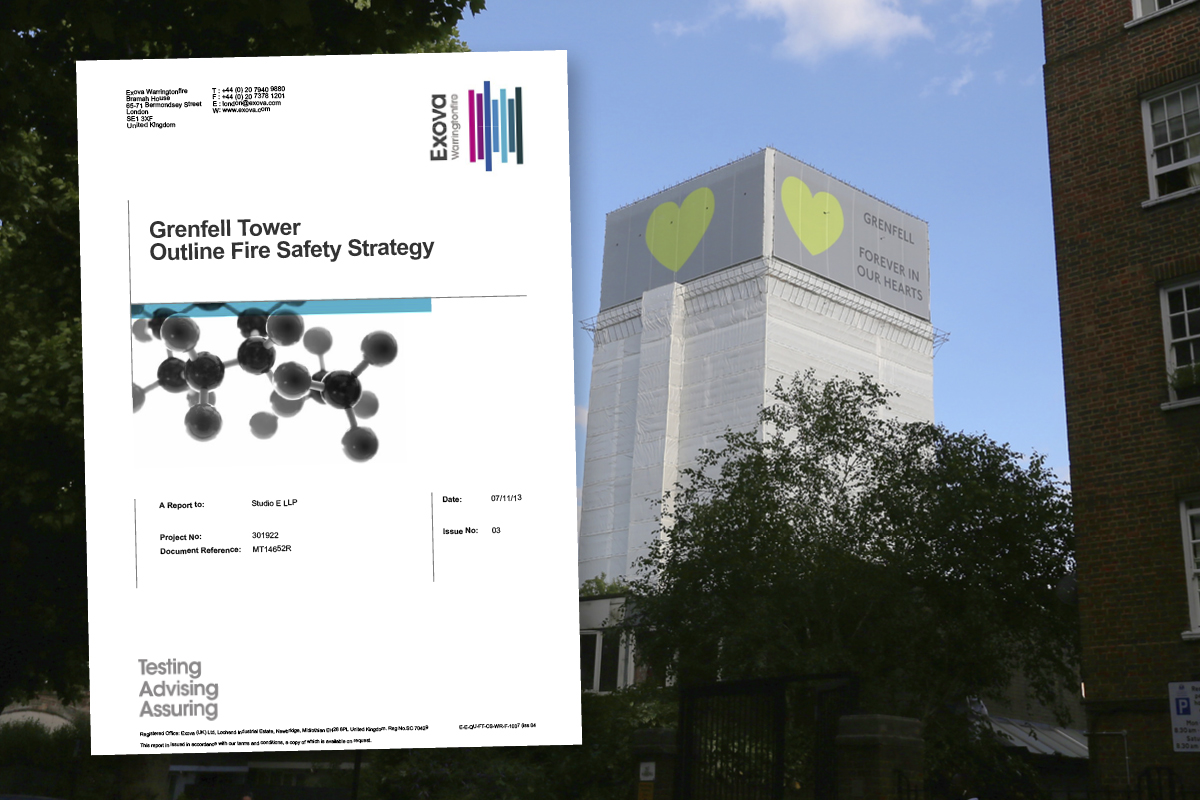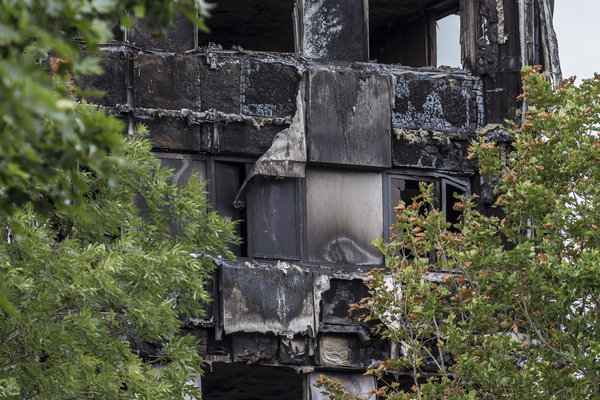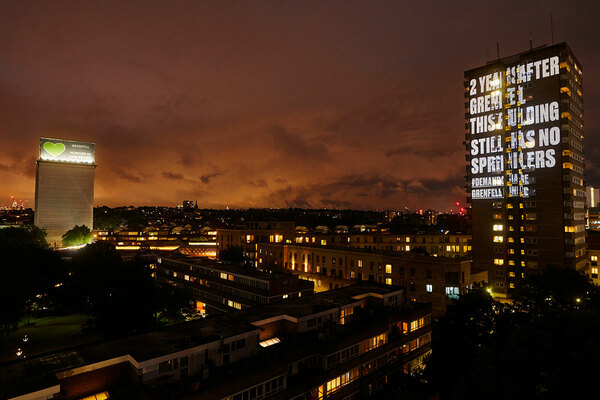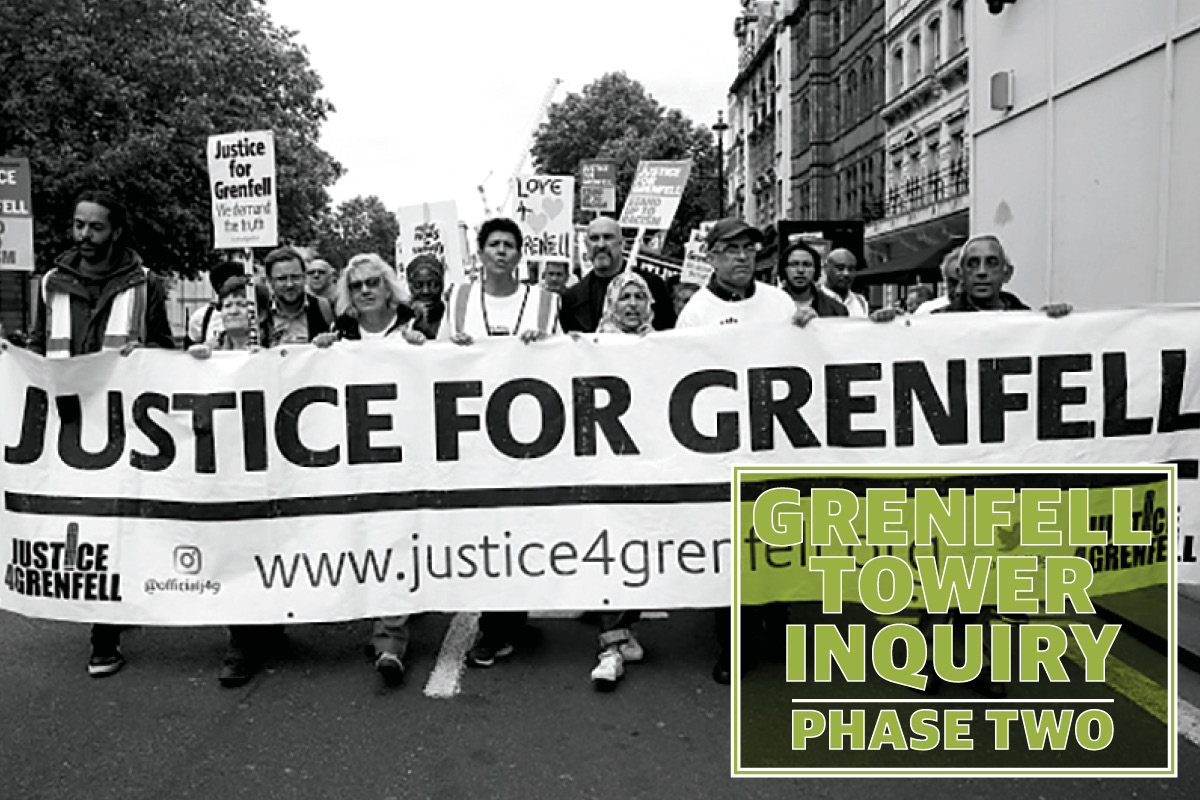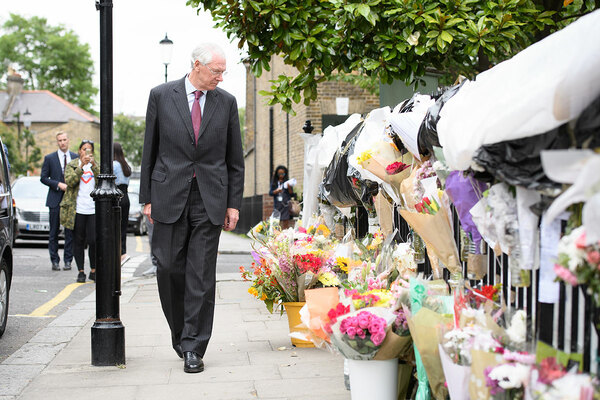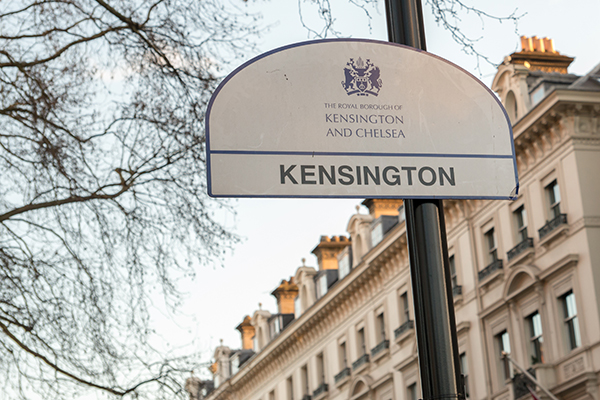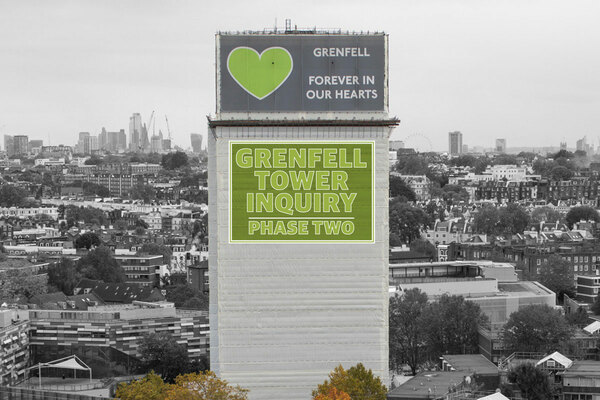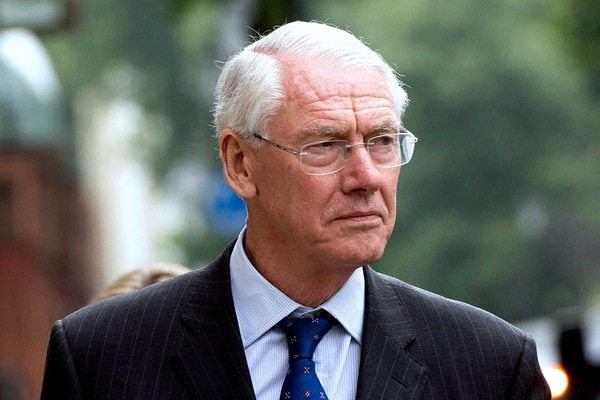Grenfell Tower Inquiry phase two preview: the decision to install the cladding
Ahead of the start of phase two of the Grenfell Tower Inquiry on 27 January, Inside Housing is previewing some of the issues that will be under consideration. In the third of these, Peter Apps looks at the decision to use combustible aluminium cladding. Picture: Studio E
The focus in the second phase of the inquiry will move from whether the cladding was responsible for the fire’s rapid spread (it was) and whether it breached building regulations (it did) to who decided to install it and why. This is a question that stretches across decisions made over several years.
The plan to clad Grenfell Tower emerged over a number of years. In July 2009 a consultancy produced a plan for the area around the tower for the council – called the Notting Barns South Draft Masterplan.
This report noted that land values in the area were “depressed” compared to the rest of the borough, and suggested knocking down and rebuilding the estate around Grenfell as the fix for this.
“Most of the existing housing in the area would be demolished to make way for a mix of new and refurbished private, intermediate and social rented homes of a range of house types,” it said. It noted that interest in the project from private developers would be “significant”.
In particular, it wanted the tower to be demolished. “We considered that the appearance of this building and the way in which it meets the ground blights much of the area east of Latimer Road Station… On balance our preferred approach is to assume demolition,” it said.
These plans never went ahead, as the construction industry suffered and land values reduced during the credit crunch. Nonetheless, the council resurrected plans to refurbish the building (rather than demolish it) in the early 2010s.
This was part of a broader plan to improve the area with the provision of a new leisure centre and the addition of 30 new homes to the tower. The council was also seeking to improve the insulation performance of the building and provide a new communal heating system. This type of work was not unusual.
But there was also a desire to improve its appearance.
“The changes to the existing tower will improve its appearance especially when viewed from the surrounding area. Therefore views into and out of the conservation areas will be improved by the proposals,” a planning application submitted in 2014 said.
Once the plans to refurbish the building were made, the question became how to pay for what would be a major programme of work.
At this stage, like all councils in the country, the Royal Borough of Kensington and Chelsea’s housing business (through which it was legally obliged to fund the work) was operating under a ‘borrowing cap’ imposed by central government to keep national debt down. This meant its power to fund the work through taking on debt was limited.
As Inside Housing revealed in 2017, this artificial limit on borrowing directly resulted in it taking a different approach. The council sold some basements it owned just off the King’s Road to a developer for £8m. Of this, £6.9m was earmarked for the Grenfell Tower refurbishment. The budget was later upped to £9.7m using some of the housing budget in 2013 and again to £10.3m in 2014.
There has been a good deal of debate since the fire about whether this budget should have been higher. Could the council have tapped the reserves on its Housing Revenue Account to increase the budget? Could it have used money it was raising from buying and selling other property – a practice unearthed by a joint investigation by the Bureau for Investigative Journalism and HuffPost UK last year?
These questions will no doubt be explored in the inquiry.
But having set the budget at £9.7m, the council required a contractor that could do it at this price. The first two it sought to appoint – Bouygues UK and then Leadbitter – both dropped out because of budget concerns. Leadbitter priced the work at £11.278m, according to council papers. An open procurement process was held to find an alternative contractor and Rydon was appointed on a design-and-build basis, having submitted “the most economically advantageous tender”, according to council documents.
The focus then moved to the job in hand and the selection of the material to clad the tower. Residents were consulted on options. While there is no evidence that fire safety was mentioned, the consultation documents note that “various cladding options have been shown to residents, with the composite zinc cladding system being favoured by the majority”.
This selected cladding was described as having a zinc exterior with a “high-density, mineral-rich core” – which means it is likely to have been a far more fire-safe option than the cladding eventually installed.
Evidence emerged quite shortly after the fire which suggested that budgetary pressures came into play in making this decision to override the material selected at consultation.
An email obtained by The Times shortly after the fire shows that in June and July 2014, representatives from Kensington and Chelsea Tenant Management Organisation and Artelia UK, the project management consultants for the refurbishment, swapped emails discussing options for reducing the cost of the cladding. “We need good costs for Cllr Feilding-Mellen and the planner tomorrow at 8.45am!” one email reads.
Rock Feilding-Mellen was the cabinet member for housing at this time, and was responsible for overseeing the refurbishment. The email listed three options for reducing the cost of cladding, The Times reported. Using aluminium panels rather than zinc could mean a “saving of £293,368”, it said.
Grenfell Tower Inquiry phase two: modules
Inquiry chair Sir Martin Moore-Bick (picture: Getty)
The second phase of the Grenfell Tower Inquiry will be split into eight separate modules. Hearings will begin on Monday 27 January with the first module called ‘The primary refurbishment (overview and cladding)’.
This will include an examination of the decision to carry out the refurbishment and its budget, as well as the procurement of Rydon to act as the ‘design-and-build’ contractor for the job.
The selection of the materials in the cladding system, their compliance with the regulations and the process of building control will also come under the spotlight.
The inquiry will then move on to the testing, certification and marketing of the cladding products used.
Other modules will include active and passive fire prevention features of the tower – such as fire doors, lifts and the smoke control system, the role of central government and further evidence about the preparedness of the fire service.
The reasoning behind the decision to use polyethylene-cored ACM panels is likely to be scrutinised in detail. If it was a cost-cutting measure, what pressures sat behind this? Who was responsible for them?
But could it have also related to its appearance? Other cladding options are available – such as a ‘rendered’ system, which sees the insulation and external cladding fixed directly to the wall. This is sometimes seen as a less aesthetic option by architects.
Regardless of the motivation, what we know is that the cladding was eventually purchased from the French arm of a giant multinational metals company called Arconic.
Emails were obtained by the Reuters news agency in 2017 from Deborah French, UK sales manager at Arconic, relating to the sale of the ACM for Grenfell. She provided five options for the cladding, including the polyethylene-cored version. The emails did not specify that Grenfell was a high rise but they did refer to “Grenfell Tower” and made reference to other high-rise buildings when discussing the project.
The inquiry will want to investigate in detail what was said and what was known. Did the buyers know they were receiving a dangerous product? Did the sellers? What specifically was said, if anything, about the risks from fire?
The panels were shipped to the UK where they were fitted by the sub-contractor Harley Facades. They were then installed on the tower during the refurbishment.
Sign-off for the work came from the public sector building control inspectors at the Royal Borough of Kensington and Chelsea. Again, the inquiry will ask major questions about what assurances were given to these inspectors and their reasoning for signing off the system as compliant.
RBKC statement
Elizabeth Campbell, leader of Kensington and Chelsea Council, said: “No matter your point of view, your role, or which organisation you represent or worked for, Grenfell is a tragedy that should not have happened. It is a tragedy that can never happen again.
“The council will continue assisting the inquiry, as demonstrated in phase one, no matter what. We understand that the actions and decisions of those serving the council prior to 14 June 2017, and in the days after the tragedy, will be under intense scrutiny.
“That is right, and we welcome it. We hope all the organisations and companies giving evidence over the coming months accept it and help the inquiry get to the full unvarnished truth.
“Our first thoughts and our last thoughts will always be with those who lost their lives, their families, their friends.
“We are committed in doing our very best to ensure lessons are learned, so they can be applied by every council, every authority, every building owner, every private landlord, and every single person that has responsibility for housing in this country.
“We have reviewed our services and made significant changes to the council since the tragedy, we felt it was something that couldn’t wait and shouldn’t wait.
“These changes have been focused on improving housing management, planning, contingency and emergency planning, and our community services – the areas which clearly link back to the tragedy in 2017.
“But Grenfell has had a much more profound reach into the organisation. It has made us look at ourselves, our values and behaviours, the way we work and the way we interact with the people we serve. We need to continue to learn from the Grenfell tragedy and consider how it will shape what we do for years to come.
“Many changes will be deemed too little and too late, and we understand that. But we hope phase two delivers the same clarity as phase one, and all organisations involved act upon the findings, resisting the temptation to point the finger at each other during or after the process.”
Grenfell Tower Inquiry phase two previews
Picture: Getty
Inside Housing published a series of preview articles ahead of the start of Phase Two of the Grenfell Tower Inquiry on Monday 27 January. You can read them here:
What was known in central government about cladding?
What did officials know about the dangers of fire from combustible cladding, and did they act on the warnings?
Click here to read the full story
The testing and certification of materials
What tests and certificates existed for the materials used in the cladding system on Grenfell Tower, and was the system that provided them fit for purpose?
Click here to read the full story
The decision to install the cladding
Who decided to install polyethylene-cored ACM cladding on Grenfell Tower and why?
Click here to read the full story
The fire doors and windows
What went wrong with the fire doors and window installed at the tower?
Click here to read the full story
The warnings of the local community
What did residents say before the fire and why were they ignored?
Click here to read the full story
Over the course of the inquiry, Inside Housing will publish regular news updates on its progress and a weekly round-up of the key evidence and its significance for the social housing sector every Friday afternoon.
Grenfell Inquiry: what will be investigated in phase two
Picture: Rex Features
The deceased
Sir Martin originally hoped he would be able to publish findings on the circumstances in which the deceased met their deaths as part of phase one. This has now been pushed to phase two as it requires “more detailed examination of the evidence that has been yet been possible”.
The London Fire Brigade
A further investigation will be made into the London Fire Brigade (LFB) as an organisation, following the failures of response identified in phase one of the report. This will include questions over training and a greater scrutiny of those at the top.
Testing and certification of materials
Questions over how Grenfell came to be covered in highly combustible materials will “lie at the heart” of phase two. This will involve looking into the adequacy of regulations, the effectiveness of the tests currently in use and the manner in which materials are marketed.
Design and choice of materials
The 2016 refurbishment of the Grenfell Tower will be under the spotlight in phase two, with questions being asked about why aluminium composite material (ACM) panels and combustible insulations was chosen. This will include an examination of the government’s building regulations.
Fire doors
Following the concerns raised over fire doors as part of phase one, phase two will look further into whether these doors complied with regulations, whether they were able to provide appropriate protections against fire and smoke and if not, how that situation came about and why.
Window arrangements
Phase one found the use of uPVC window jambs in close proximity to combustible insulation allowed the fire to initially escape the flat in which it began. Decisions made over windows as part of the 2016 refurbishment will also be explored in phase two.
Lifts
It appears that the ‘fireman’s switches’, which should allow firefighters to take control of a lift, were not working on the night of Grenfell, leading to fatal consequences. Phase two will investigate whether the lifts in Grenfell were properly maintained.
Smoke extraction system
An investigation will be carried out into suggestions, made as part of phase one, that the smoke extraction system failed to operate in accordance with its design and potentially contributed to the spread of smoke between different floors.
Local community warnings and the authorities’ response to Grenfell
Phase two will delve more into accusations that local community warnings over fire safety and the refurbishment were ignored by the tenant management organisation. It will also scrutinise the authorities response to the disaster in the immediate aftermath.


